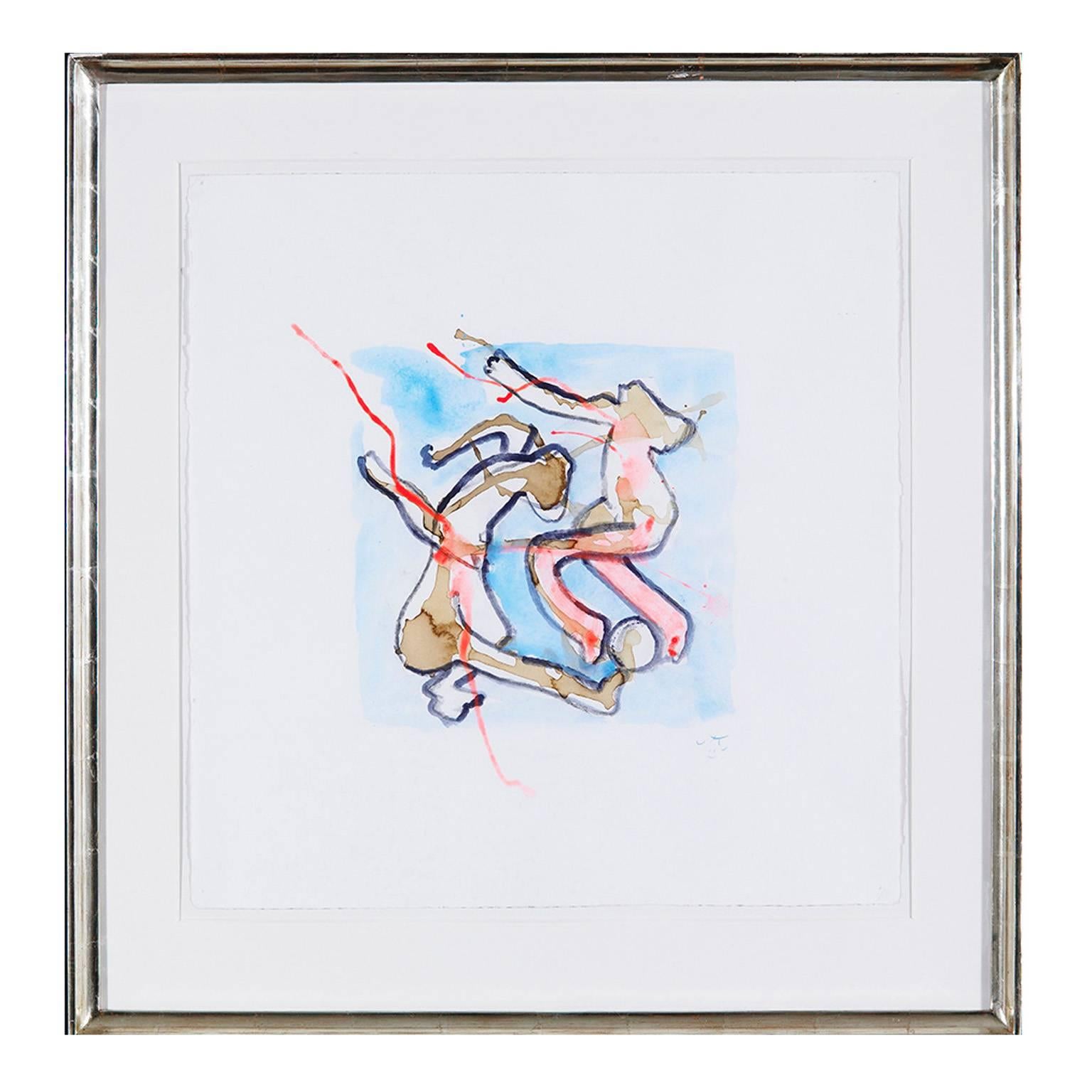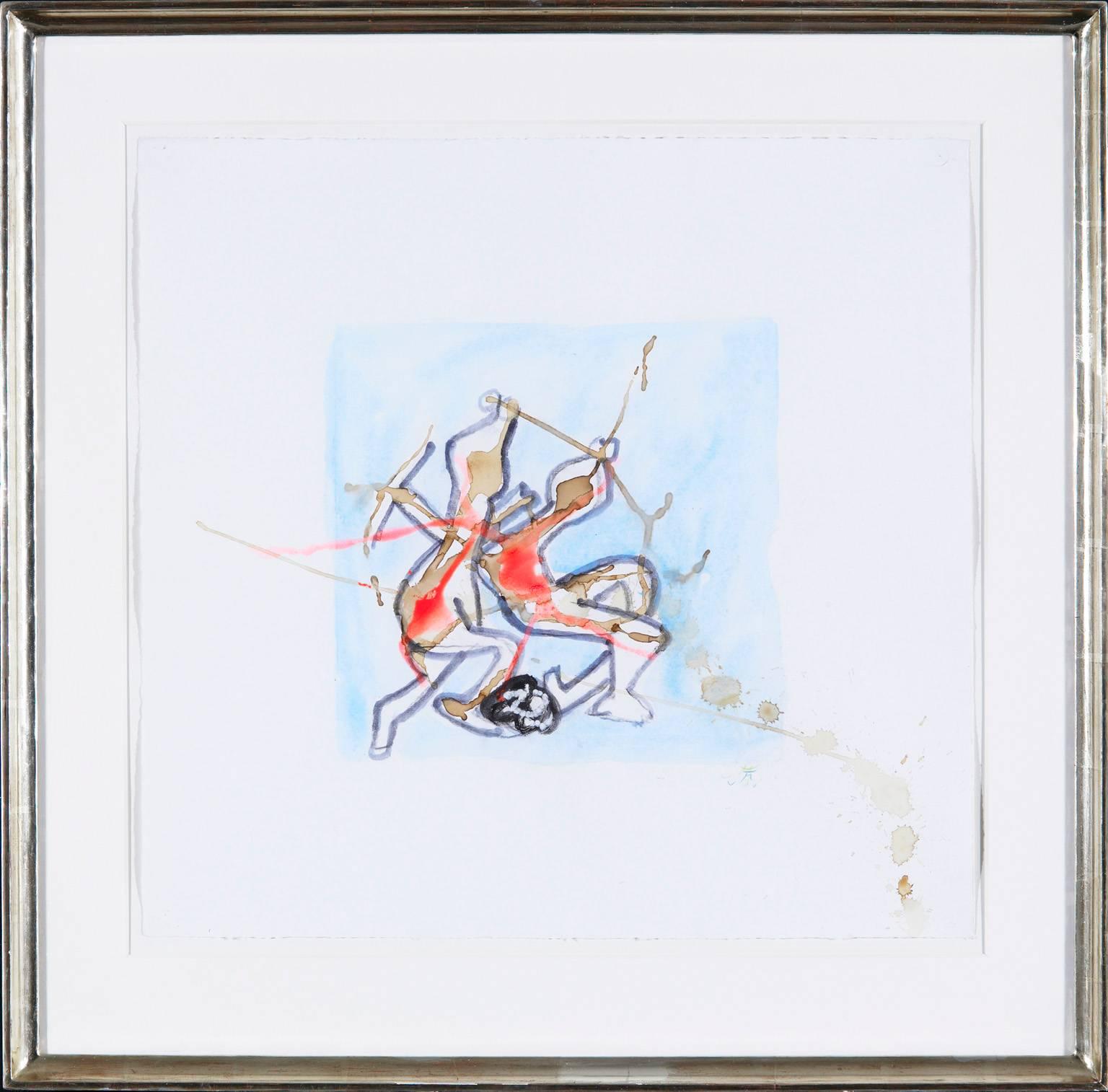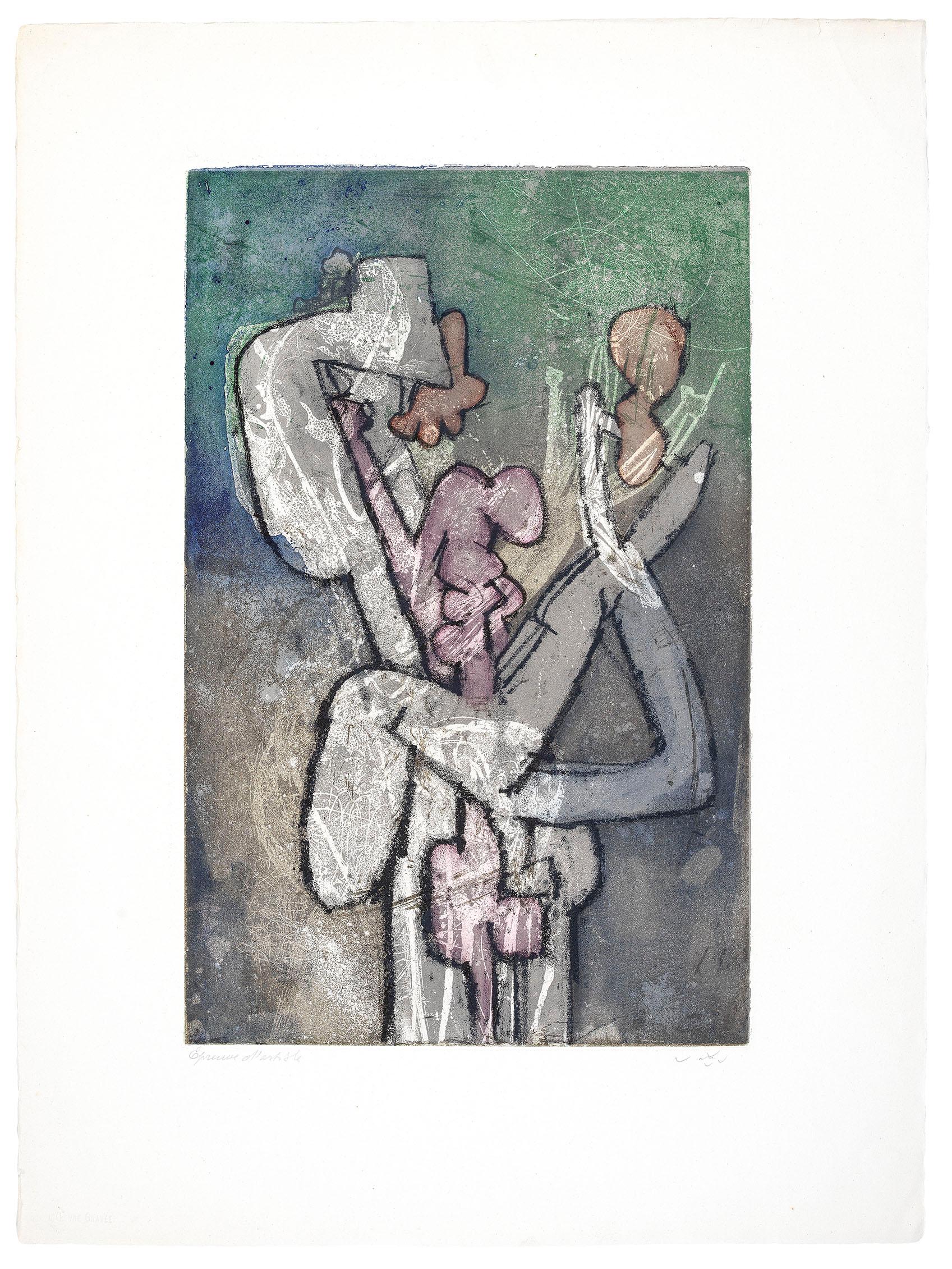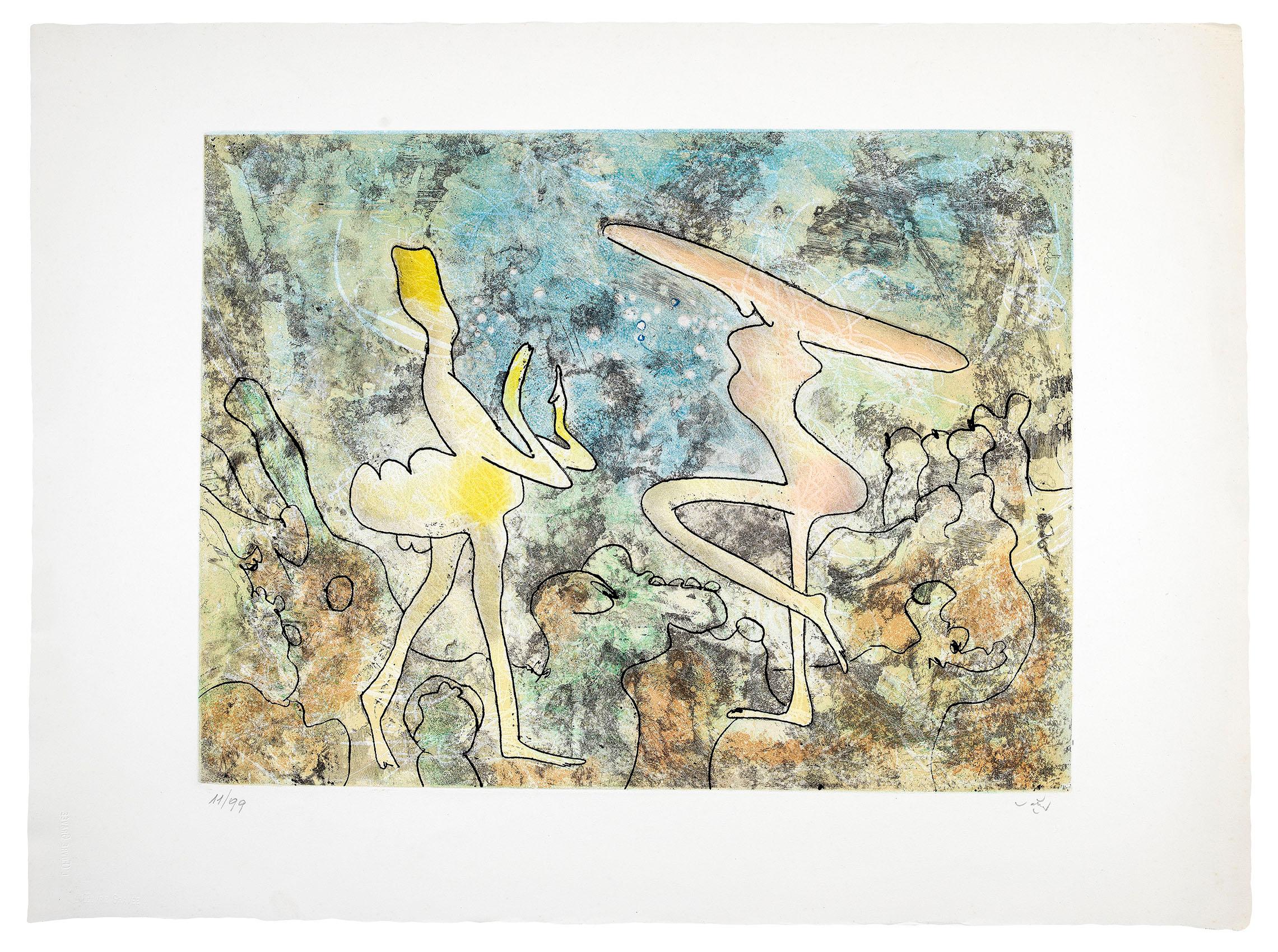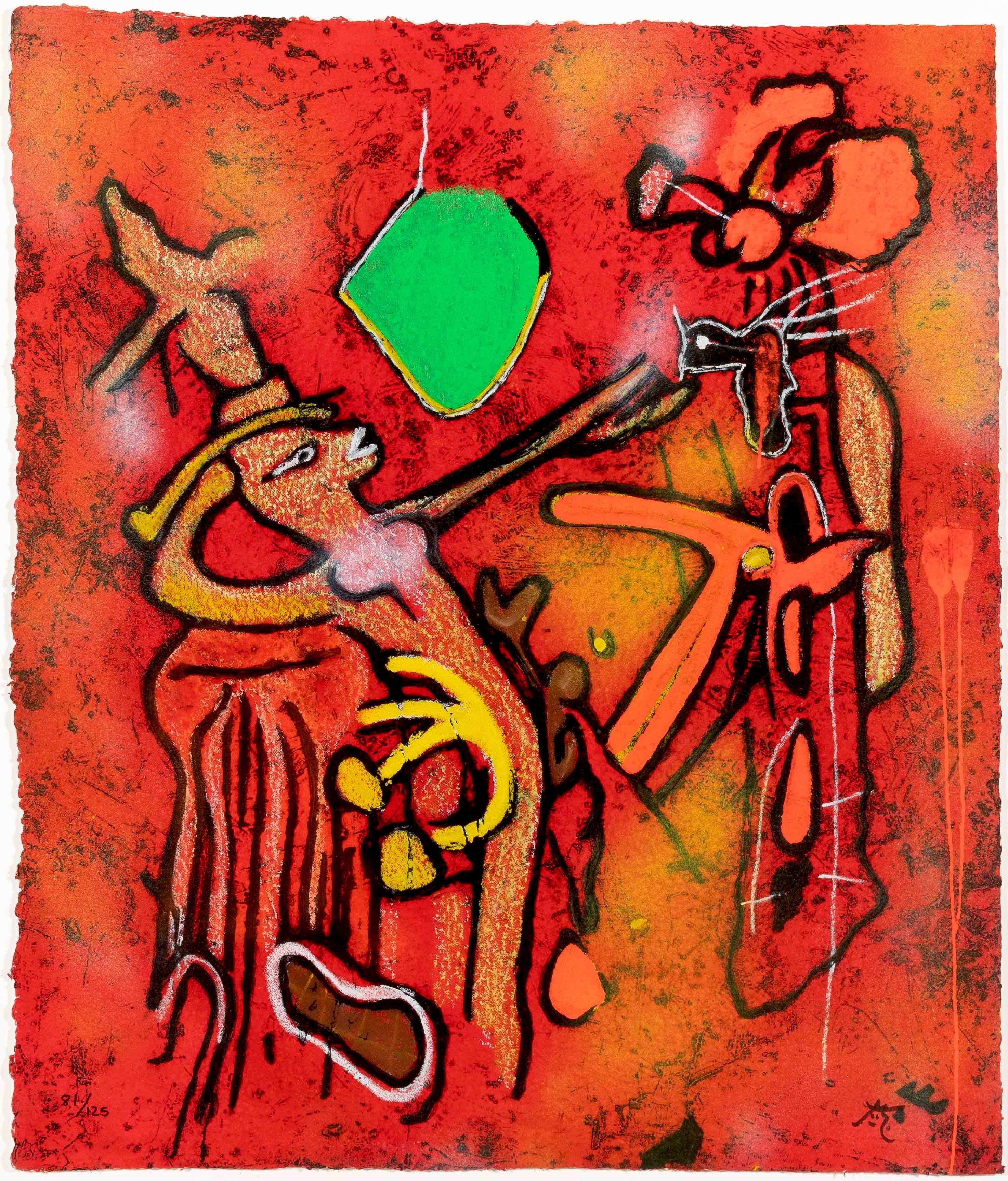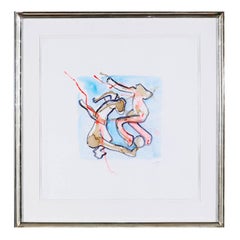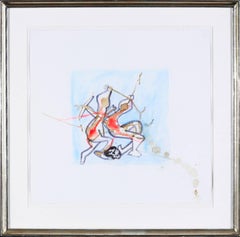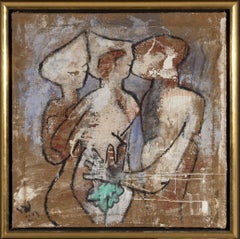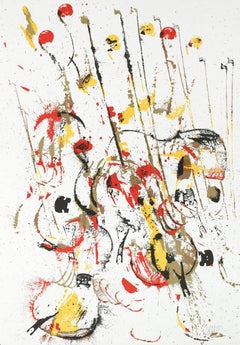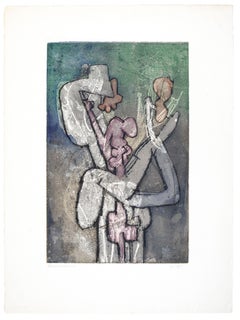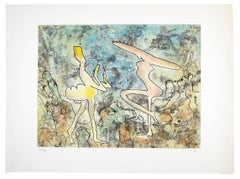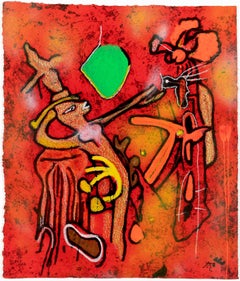Roberto MattaFoot Musik1990
1990
About the Item
- Creator:Roberto Matta (1911-2002, Chilean)
- Creation Year:1990
- Dimensions:Height: 29.93 in (76 cm)Width: 30.71 in (78 cm)
- Medium:
- Movement & Style:
- Period:
- Condition:
- Gallery Location:Malmo, SE
- Reference Number:1stDibs: LU328104294
Roberto Matta
“The function of art,” the Surrealist Roberto Matta once stated, “is to unveil the enormous economic, cultural and emotional forces that materially interact in our lives and that constitute the real space in which we live.” In his paintings, Matta sought to expose those forces through the Surrealist practice of automatism, creating work in a free-associative state intended to conjure the unconscious.
After studying architecture in his native Chile, Matta, then 22, chose to pursue the field in Paris, where he mingled with stars of the avant-garde like Gertrude Stein, Salvador Dalí and Walter Gropius. In the late 1930s, he abandoned Paris, together with his job at Le Corbusier’s studio and (for a time) his career, for modern art’s new epicenter, New York City. There, he became a colleague of art legends like Marcel Duchamp and Arshile Gorky.
Although celebrated primarily for his work as a painter, Matta was an equally talented furniture designer. His furniture pieces, like his artworks, are the stuff of dreams. The back of his totem chair, for example, is composed of smiling, cartoonish creatures stacked on top of each other. In his MAgriTTA armchair, the top half of a plush green apple sticks out of large black bowler in homage to its namesake, the Belgian Surrealist René Magritte.
But perhaps the piece that most truly embodies his artistic philosophy is his 1966 Mallite modular system: a collection of spongy, undulating sofas and lounges that can be fitted together to form a puzzle-like room divider. The work, an original edition of which is in MoMA’s permanent collection, has in recent decades been a hard-to-find collectors’ item — until 2019, when Italian design brand Paradisoterrestre issued a reedition, available through Duplex.
Browse Roberto Matta's paintings and furniture designs on 1stDibs.
- ShippingRetrieving quote...Shipping from: Malmo, Sweden
- Return Policy
More From This Seller
View All1990s Abstract Mixed Media
Mixed Media
1990s Surrealist Abstract Drawings and Watercolors
Mixed Media
1980s Surrealist Paintings
Canvas, Mixed Media
1990s Contemporary Figurative Prints
Screen
1990s Contemporary Prints and Multiples
Screen
1990s Contemporary Prints and Multiples
Screen
You May Also Like
Mid-20th Century Surrealist Abstract Prints
Lithograph
1960s Surrealist Figurative Prints
Etching, Aquatint
1960s Surrealist Figurative Prints
Etching, Aquatint
Early 2000s Surrealist Abstract Prints
Etching
1970s Modern Abstract Prints
Lithograph
1990s Italian Prints
Paper
